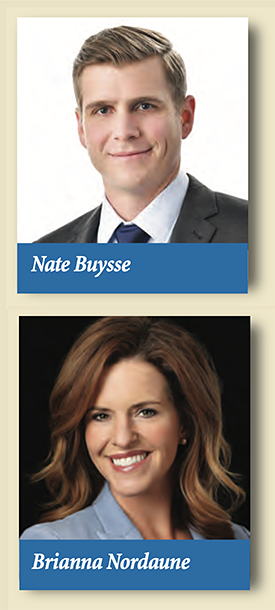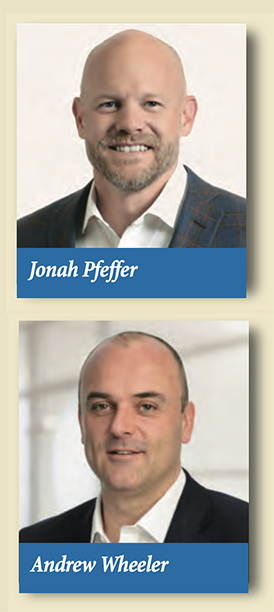For medical professional liability insurers, the health and reliability of the reinsurance market is a critical factor. Rising claim frequency and severity, increasing consolidation in healthcare, emerging risks such as cybersecurity and artificial intelligence and more are creating ongoing uncertainty in the MPL space. A hardening reinsurance market potentially adds to the difficulties that insurers are experiencing in terms of risk management.
For reinsurers, the issues are just as complex. One of the biggest factors is the need to maintain profitability margins in their business lines, including MPL. They also must deal with many of the same issues as MPL insurers, including rising MPL claim frequency, increasing healthcare industry consolidation, and emerging risks.
Reinsurance brokers facilitate relationships between MPL insurers and reinsurers, playing a crucial role in bringing these two links in the MPL chain together. Not only do brokers provide access to reinsurance markets, they also provide expert analysis and assessment of risk exposure as well as market insights. They negotiate reinsurance terms and help manage claims.
In a volatile MPL market environment, securing favorable reinsurance coverage is a key priority for insurers and captives. Understanding today’s environment—around changing placement of reinsurers, market differences for healthcare professionals and healthcare organizations, how terms and conditions are changing, and understanding reinsurer’s underwriting mindsets—will help you in your quest to make the most of available reinsurance coverage as you seek to renew or change partners.
In this article, we provide insights from four key players in the MPL reinsurance market:
- Nate Buysse, senior vice president, Guy Carpenter
- Brianna Nordaune, senior broker, healthcare segment leader,
- Lockton Re
- Jonah Pfeffer, EVP, long tail lines segment leader, Gallagher Re
- Andrew Wheeler, managing director, BMS Re
Changing Placement of Reinsurers
For both reinsurers and MPL insurers, market conditions, risk profiles, and other factors can cause changes in ongoing relationships. Because the MPL industry is small and specialized, there are a limited number of both insurers and reinsurers that operate in this space. When it
comes time to renew or change reinsurance partnerships, there are many factors that both sides take into consideration as to what constitutes a successful engagement or re-engagement.

One of the most productive steps an MPL insurer can take to ensure that they are well positioned to fill their need for reinsurance is to be analytically prepared. Ideally, this takes the form of a “reinsurance workbook” that not only contains metrics around your organization’s policyholder risk profile and claims history, but also detailed analytics illustrating the impact of trends, developments, patterns, and exposure shifts as appropriate, the variables that are affecting your business, and your claims history, according to Pfeffer.
A greater emphasis on high quality data gives reinsurance brokers the opportunity to ensure success and the best possible outcome for their client’s placement, said Nordaune. Many brokers will include what is referenced as an “as-if” actuarial analysis to reinsurers but it’s
important for that analysis to be credible or reinsurers will throw it out altogether. “As brokers, we advocate for our clients and use data to support their strategies, but quality and consistency of data year-over-year delivered to reinsurers is crucial,” she continued.
Regardless of what type of analysis is conducted, MPL insurers and their brokers need to proactively get in front of their reinsurance partners to ensure there is transparency and that they get the coverages they need, Pfeffer said.
Because the MPL reinsurance space is in a hard market—or at least a firming market—that means the market has to balance between the profitability requirements and capital availability of reinsurers and the demand of MPL insurers, according to Wheeler. “I think for the right reasons, with a good partnership, there can be additional availability and capacity within the reinsurance market,” he added. “There have been some shifts within the market, with some reinsurers offering more capacity while others are keeping their powder dry.”
In Pfeffer’s experience, there’s a fine balance between not getting enough support to fill out a placement and being oversubscribed. “Usually, I find we can get to 80 to 85 or even 90% of what’s needed with the expected markets and the last 10 to 20% can be a struggle,” he said. Frequently, reinsurers want insurers to retain 10% to demonstrate they have skin in the game, noted Buysse.
Market Differences for Healthcare Professionals and Hospital Insurers
Since the characteristics of the MPL insurance and reinsurance markets are different for healthcare professionals and hospitals and health systems, the issues that each has in securing reinsurance coverage also differs. “Reinsurers, given an opportunity to select a hospital program or a parallel physician program, overwhelmingly demonstrate a clear preference for physicians at this time, at least domestically in London, Germany, and Bermuda,” said Buysse. “One of the reasons why is that hospitals typically have much higher needs and limits. Also, in the physicians’ programs we’re involved with, the trend has moved away from a lower working layer to more of a capacity cover. Hospital coverage tends to be more complex relative to providers.”
Wheeler noted that this is the first time many underwriters and brokers have dealt with a hard market because this is the first hard market in 15 years. “Also, the hospital towers with very large multi-billion dollar-plus towers are a struggle to get,” he said.

Nordaune agreed, noting, “By and large, reinsurers prefer to support the physician side of MPL. That being said, hospital business is gaining more traction as that line is seeing greater underlying rate action and improvement to terms and conditions. It’s not that reinsurers won’t write hospital business. Instead the question is are they getting the right price for the limit capacity they are offering.”
For reinsurers, there are underlying components that are evident, which explain why they are moving away from hospital exposure, said Buysse. “But it’s not impossible to find reinsurance coverage,” he added. “It just needs to be structured differently. The questions reinsurers are asking in this space include, ‘Are we making money on hospital coverage?’ ‘Who is making money in hospitals?’ ‘How long until we are making money in hospitals?’”
Terms and Conditions Based on Limits
During softer market cycles, many reinsurance programs got creative, adding in extra coverages, according to Nordaune. “Fast forward to today, the experience of these expanded structures have created issues for reinsurers as the coverages weren’t considered and adequately priced for,” she said. “For some MPL carriers, there’s the potential to
not fill out support of their program if the focus remains on certain bells and whistles that might not even be needed or used. Therefore, it is important to know what is the actual issue if your terms and conditions are not creating a consensus with cedents and reinsurers, especially
if the divide is created by the uncertainty of these extra coverages that have been added in the soft market and not actually ceding losses. As a reinsurance buyer in this market, the key to balance is having as broad of coverage as possible and securing adequate capacity to cover the true risk that keeps you up at night.”
Buysse agreed, saying, “During the soft market cycle we jammed all sorts of coverages in, but now, while it’s still possible to get all those included, you’re going to have a limited market with that approach. You’re going to potentially exclude yourself from a lot of the market if you get too cute and try to get too many coverages all in one.”
For Pfeffer, the types of coverages insurers want can significantly impact the price they will end up paying. “Whether you stack up a tower or split things into separate towers depends upon the market and the company’s experience,” he said. “There are strategic places specific to each client where it might make sense to hold things together or keep them separate.”
It's not that the terms and conditions you want aren’t available from reinsurers, he added. It’s just that the price points involved might be more than what you want to pay. Because of the harder market, reinsurers have more leverage and more challenging and informed decisions need to be made. “Reinsurers, like insurers, are concerned about the large verdicts in this space,” Nordaune said. “As a buyer, there is a balance between not having too many restrictions but having the capacity to cover the true risk that you are wanting to cover in your
reinsurance program.”
Wheeler noted the systemic exposure is an issue in the MPL reinsurance space currently. Systemic exposure refers to a potentially widespread risk or liability stemming from a specific medical issue or trend. “These systemic exposures such as COVID, cybersecurity, and sexual misconduct end up compounding so that every time they occur, they are excluded from recovery,” he said. “At that point, you may say, ‘well, what am I now buying?’ That’s a tough decision to make because everyone agrees there is systemic exposure out there, but trying to get your arms around managing that exposure is very difficult.”
Reinsurer’s Underwriting Mindsets
If you’re an MPL insurance executive, manager, underwriter, or actuary, it’s useful to understand the mindset of MPL reinsurers. “The reinsurance perspective is that they’ve lost money in MPL for probably 10 years,” said Wheeler. “They have finite capital and their mission is to make
a certain margin. They got in the position that they are in due to market volatility, which tends to land disproportionately with reinsurers because they are providing large vertical towers whether that is per policy or for systemic risk.
“Corrections in the market have been necessary for some time,” he continued. “The underwriters are starting to do it, but it can’t be addressed in one year. That’s why they want to break out hospitals versus physicians. They are also concerned about the impact of inflation in these long-term lines. This means more data analytics. It also means that underwriters aren’t going to get fired for policies they didn’t write.”
Ultimately, Wheeler noted, MPL insurers have to be prepared to tell a growth story. Reinsurers are focusing on underwriting policies to support insurers that are growing outside of traditional states, growing into different product lines and so forth. MPL insurers that invest in relationships with reinsurers over the long-term are also more likely to find at least most of the coverage they are seeking.
A Final Word
In a volatile MPL insurance market, both insurers and reinsurers are coping with many of the same issues. To create a mutually beneficial relationship, insurers need to rely on data-driven storytelling and ensure that they are laser focused on obtaining the most essential coverages.